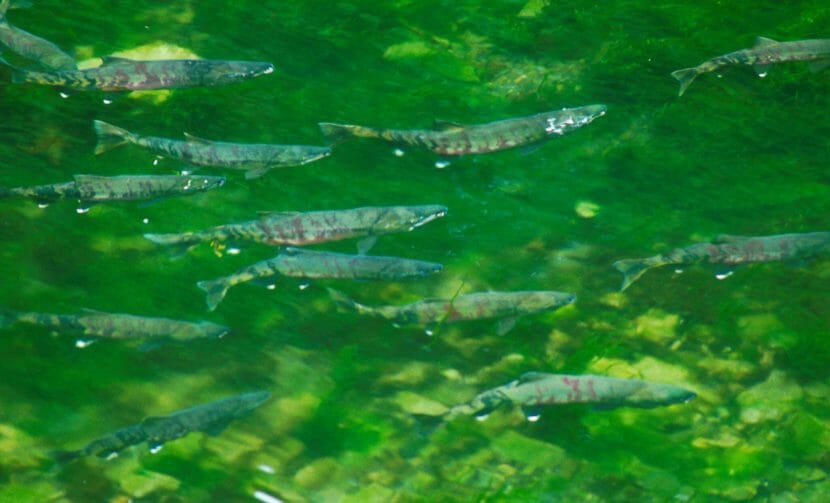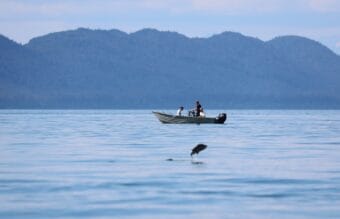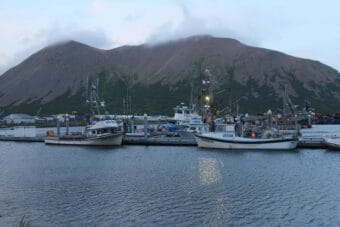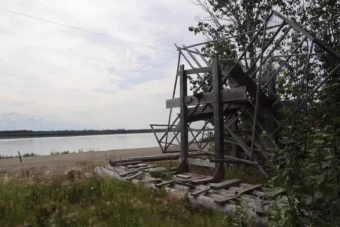
New controls on how fish are commercially harvested and more research to understand the effects of climate change in the ocean and in freshwater spawning grounds are some of the key recommendations of an Alaska task force examining ways to address bycatch, the term for capture of untargeted species in commercial seafood harvests.
Gov. Mike Dunleavy, who created the task force a year ago, released the group’s final report late Thursday.
“I look forward to working with task force members and stakeholders to do everything we can to get more fish to return to Alaska’s waters,” Dunleavy said in a statement.
The collapse of salmon runs vital to western Alaska — and public complaints that too many salmon were being intercepted at sea before returning to spawning grounds — triggered the creation of the Alaska Bycatch Task Force. However, its work extended to bycatch of various crab species and halibut.
Crab stocks, like salmon, have also collapsed. Population crashes spurred closures this year for two important harvests, the Bering Sea snow crab fishery and the Bristol Bay red king crab fishery.
To some degree, bycatch is unavoidable, the task force said.
“All fisheries have bycatch. Through our work we saw a need, and made recommendations for, continued work on incentives and methods to avoid and reduce bycatch. In regards to the long term, there is a need to find ways to better utilize unavoidable bycatch,” John Jensen, the task force chairman, said in an introductory statement in the final report.
One recommendation in the report is for the state to establish a “scientific-based” firm cap on chum salmon bycatch in the Bering Sea pollock fishery.
Such a cap has long been in place for Chinook salmon, a species that is the subject of a U.S.-Canada treaty. However, the North Pacific Fishery Management Council, the panel that regulates commercial fishing in federal waters, has so far declined to set any cap on bycatch of any other salmon species.
Another recommendation is to expand the number of people observing the trawl fleet operating in the Gulf of Alaska. To better track bycatch of prohibited species, all vessels conducting bottom trawling in the Gulf should have certified fishery observers posted onboard, the report said. Trawling is a term for fishing with a large, wide net that a ship drags, often to harvest groundfish near the sea bottom.
Those observers are already required on all pollock trawlers operating in the Bering Sea, but only partial observer coverage is currently required for vessels operating in the smaller Gulf of Alaska harvests.
The North Pacific Fishery Management Council is scheduled to review the task force findings at its ongoing meeting in Anchorage. The council is meeting through early next week to set 2023 groundfish harvest levels and take other actions.
The council on Friday rejected a proposed emergency rule that would bar fishing for six months in an area measuring about 3,900 square nautical miles that is considered to be essential habitat for red king crab.
The rule was requested by Bering Sea crab harvesters, who say the ban would prevent crabs from being injured or killed by trawl gear that scrapes the seafloor.
Emergency action is justified, Jamie Goen, executive director of the Alaska Bering Sea Crabbers organization, said in a letter to the council. “Time is of the essence for protecting this stock,” she said.
Representatives of the trawling harvesters oppose the emergency rule, questioning its efficacy. In their written comments to the council, leaders of the At-Sea Processors Association and United Catcher Boats say there is exceedingly low red king bycatch by the trawl fleet, and that pushing trawl vessels out of the designated red king crab protected area would increase the risk of bycatch of salmon and other species.
Ultimately, council members decided that the rule sought by the crab harvesters was not supportable.
“I agree most cerntaintly that this is an emergency. It just doesn’t merit the criteria of the emergency action,” member Andy Mezirow said before voting to with the rest of the council to reject the proposed rule.
This story originally appeared in the Alaska Beacon and is republished here with permission.



